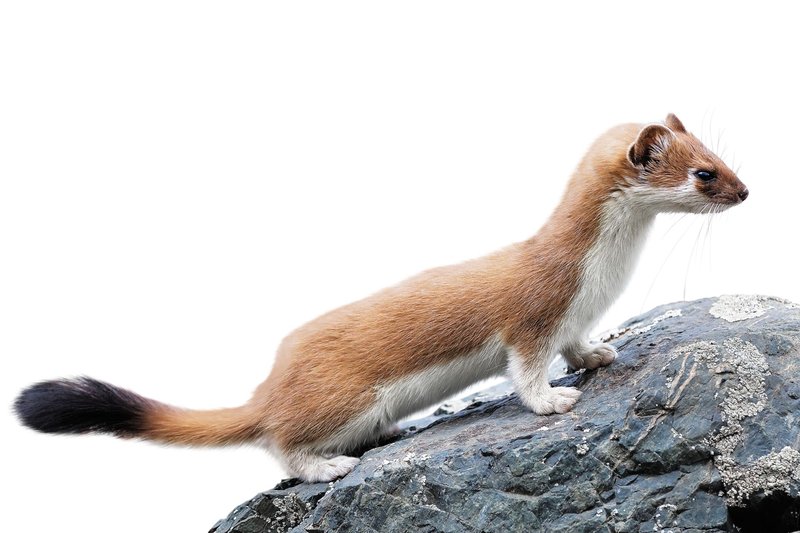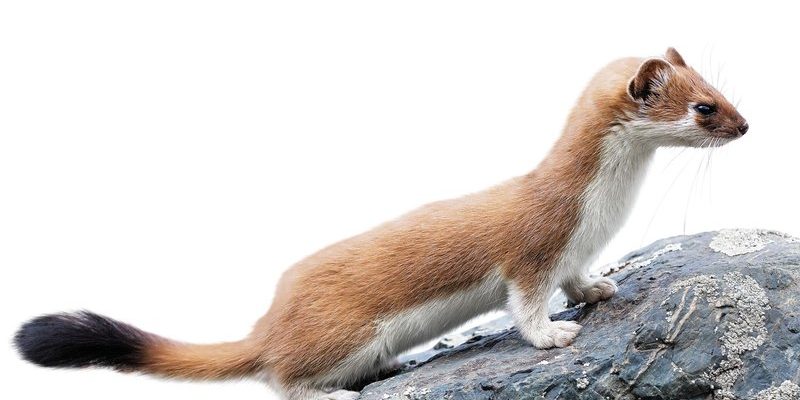
Stoats are fascinating little mammals, and they play a significant role in controlling the populations of other animals. They belong to the weasel family and are native to various parts of the world. You might think of them as nature’s balance keepers. In this article, we’ll look at their behavior, diet, ecological roles, and even their relationship with humans. So, grab your favorite beverage, and let’s unravel the mysteries of the stoat!
Understanding the Stoat: A Quick Overview
Stoats, scientifically known as *Mustela erminea*, are small carnivorous mammals that can be found in a variety of habitats ranging from forests to grasslands. They have a distinct appearance: with a long, slender body, short legs, and a bushy tail. Their fur can change color with the seasons, turning brown in summer and white in winter, which helps them blend in with their surroundings to avoid predators and sneak up on prey.
Their size usually ranges from 9 to 12 inches in length, with a tail that adds another 3 to 5 inches. You might be wondering how such a small creature can play such a large role in nature. Well, stoats have adapted superbly to their environment, equipped with sharp teeth and incredible agility that makes them efficient hunters.
In the wild, a stoat’s life is anything but boring. They’re known for their energetic nature and playful behavior, often seen rolling around or chasing each other. This playfulness is not just for fun; it helps develop their hunting skills. As cute as they are, don’t let their size fool you—they are formidable hunters, often taking down prey much larger than themselves, like rabbits.
The Stoat’s Diet: A Carnivorous Predator
When it comes to food, stoats are all about the hunt. They primarily feed on small mammals, such as rabbits, hares, and rodents. Their keen sense of hearing and exceptional speed help them locate and catch their prey with surprising efficiency. You could say they are nature’s hunting machines!
Interestingly, stoats are also known to eat birds, eggs, and even insects when their favorite prey is scarce. This flexibility in their diet makes them resilient and adaptable to changing environments. It’s kind of like having a favorite dish but still being able to whip up something tasty with whatever ingredients are on hand.
The stoat’s hunting style is strategic. They can sneak into rabbit burrows or ambush prey by hiding and waiting for the perfect moment to strike. This role as a predator is vital for maintaining the balance of their ecosystem. If stoats weren’t around to keep the populations of rabbits and rodents in check, those numbers could explode, leading to overgrazing and the depletion of plant life.
The Stoat’s Role in the Food Chain
The stoat occupies a unique position in the food chain. As both predator and prey, they form essential links in their ecosystem. On one hand, they help control populations of smaller animals, which can, in turn, affect the vegetation in their habitat. When stoats hunt and keep these populations in check, they promote plant growth and biodiversity.
On the flip side, stoats also face threats from larger predators like hawks, foxes, and even domestic cats. This dual role of being both hunter and hunted means that every stoat plays a part in the complex web of life. Think of it like a game of chess—every piece matters, and losing one can change the entire strategy.
Their presence indicates a healthy ecosystem. If stoat populations decline, it can signal an imbalance, often due to habitat loss, climate change, or other environmental factors. This is why conservation efforts are so crucial for maintaining the health of their natural habitats.
Stoats and Their Ecosystem: A Balancing Act
Stoats contribute significantly to the overall health of their ecosystems. By controlling the populations of smaller mammals, they prevent overgrazing, which allows vegetation to thrive. This, in turn, supports a diverse range of other species, creating a richer and more balanced environment.
Moreover, stoats are an integral part of the nutrient cycle. As they hunt and consume their prey, they contribute to the nutrient flow within the ecosystem. Their waste products return vital nutrients to the soil, supporting plant growth. So, you could say that stoats are not just hunters; they are also natural recyclers!
Here’s the thing: when we think about conservation, it’s easy to focus on the big, charismatic animals like elephants or tigers. However, the stoat—small as it is—plays a significant role in maintaining ecological balance. Protecting stoat populations ultimately protects the entire ecosystem, underscoring the interconnectedness of all life.
The Stoat’s Relationship with Humans
You might be curious about how stoats relate to humans. While they primarily inhabit rural areas, their presence can sometimes clash with agriculture. Farmers may see them as pests because they can prey on chickens or rabbits. However, it’s essential to understand that stoats are also helpful by controlling rodent populations that can damage crops.
In some places, stoats are even used as natural pest controllers. For instance, instead of using chemicals, farmers might encourage stoats to inhabit their land to keep rodents in check. This sustainable farming practice highlights the importance of maintaining a healthy balance between human activity and wildlife.
Additionally, stoats have cultural significance in various societies. They often appear in folklore and stories, symbolizing cleverness and adaptability. Understanding these cultural connections can deepen our appreciation for these remarkable creatures.
Conservation Efforts for Stoats
Like many species, stoats face challenges due to habitat loss and climate change. As urban areas expand and agricultural land increases, their natural habitats shrink. To counter this, various conservation efforts are underway. Creating wildlife corridors and protecting existing habitats can help ensure stoats and other wildlife have the space they need to thrive.
Community awareness is also crucial. Educating people about the role of stoats in the ecosystem can foster appreciation and encourage protection measures. Organizations often run programs to promote coexistence with wildlife, aiming to reduce conflicts between humans and stoats.
You might be wondering what you can do to help. Simple actions, such as supporting local conservation groups or participating in habitat restoration projects, can make a big difference. Even small efforts add up and contribute to a healthier ecosystem for everyone.
As we’ve explored, the stoat is more than just a small, adorable animal; it’s a vital player in maintaining ecological balance. From its predatory habits that regulate smaller mammal populations to its integral role in nutrient cycling, the stoat is a keystone species within its environment. Protecting this nimble creature is crucial not just for its survival but for the health of the ecosystems it inhabits.
Understanding and appreciating the stoat’s role can inspire us to take action for wildlife conservation. By recognizing that every creature, no matter how small, has its place in the natural world, we can foster a greater commitment to protecting our planet and all its inhabitants. So, the next time you see a stoat, remember its importance and the balance it helps to maintain in our ecosystems. It’s truly a testament to the intricate web of life that connects us all.

